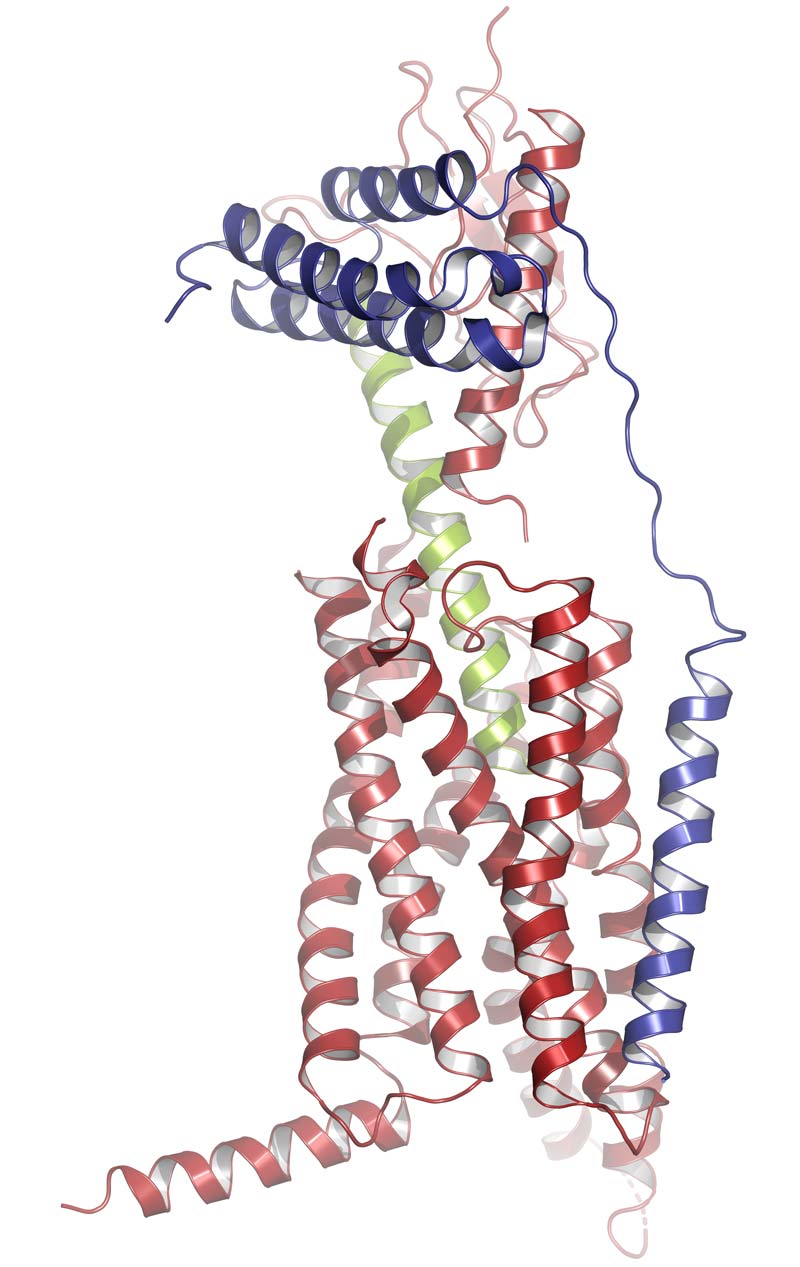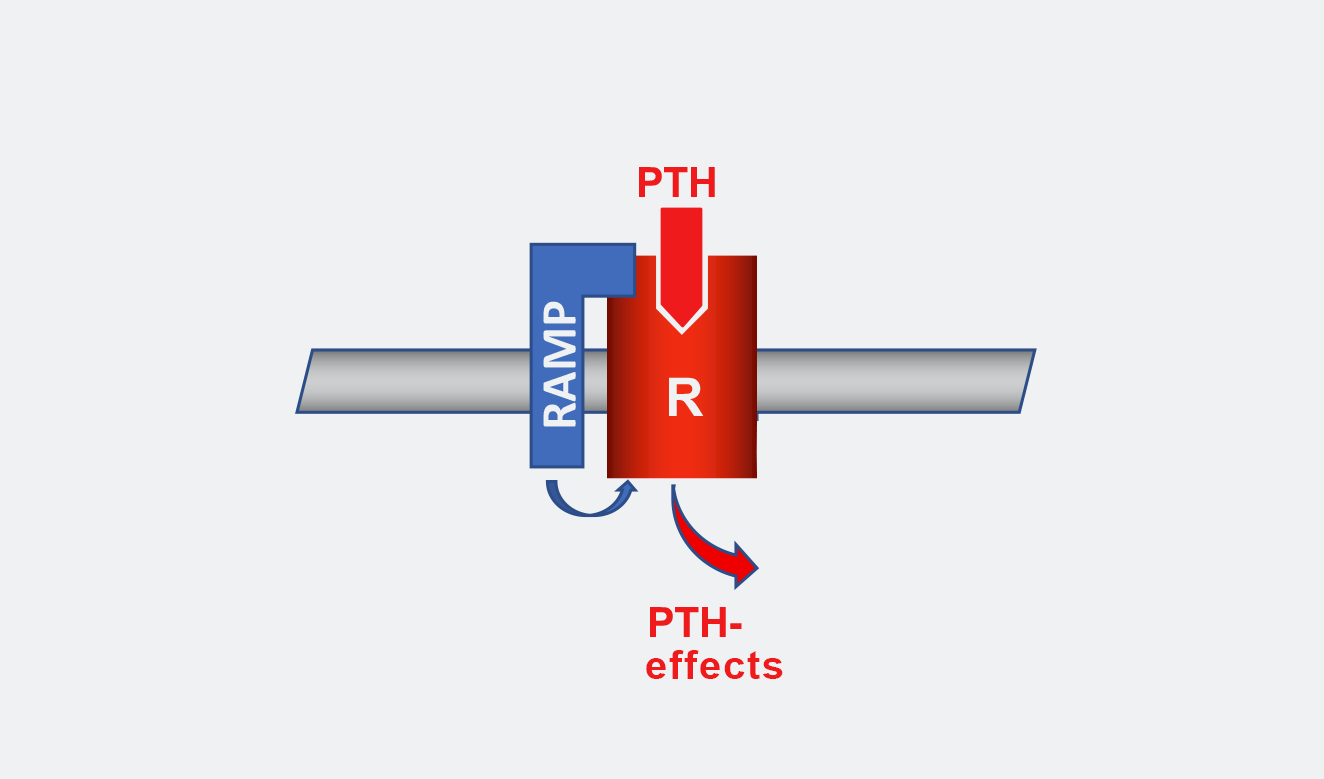A new mechanism that regulates receptors
A research team led by Martin Lohse has discovered that a protein called RAMP can speed up receptors. The mechanism could provide a new target for drugs.
G protein-coupled receptors (GPCRs) represent the most important drug targets. In the search for such drugs, research interest is now focused on so-called allosteric mechanisms. These are effects mediated via sites in the receptor that are distinct from those mediating the effects of the body’s endogenous substances, such as hormones.
One such mechanism has now been discovered by Martin Lohse’s research team. Using the receptor for parathyroid hormone (PTH - a hormone that regulates calcium metabolism and bone formation) as an example, the team investigated the effects of the regulatory protein RAMP. The acronym stands for Receptor Activity Modifying Protein. The researchers showed that RAMP causes pre-activation: It makes the receptors more receptive to their hormone, PTH, and they respond faster and stronger.
These observations were made possible by novel biosensors. They allow the activity of the receptor to be visualized directly in the microscope. “There is always something new to discover about receptors,” comments Katarina Nemec, first author of the publication in the prestigious journal Proceedings of the National Academy of Sciences USA (PNAS). “If we can mimic the effects of RAMP with drugs, then we could enhance the effects of PTH in the body. PTH is effective in osteoporosis, the widespread bone weakness that occurs primarily with age. There is a great need for new and better drugs here,” adds Professor Lohse.

Functional modulation of PTH1R activation and signaling by RAMP2.
Nemec K, Schihada H, Kleinau G, Zabel U, Grushevskyi EO, Scheerer P, Lohse MJ, Maiellaro I (2022) Proc Natl Acad Sci USA 119:e2122037119.




